[Herald Design Forum] Technology a great enabler; but humans are at heart of design
George Popescu, Sung Jung-gi, Gen Terao discuss ‘fourth industrial revolution’ and design transformation
By Kim Hoo-ranPublished : Nov. 3, 2017 - 18:09
In an age where design permeates all industries and aspects of life, this year’s Herald Design Forum questions the role humanity plays in it.
At the forum’s third session on Nov. 7, three global designers will discuss their philosophy and approach to design.
The speakers of the session, titled “The Design 4.0: New Normal Design Economy,” spoke with The Korea Herald prior to the event. -- Ed.
At the forum’s third session on Nov. 7, three global designers will discuss their philosophy and approach to design.
The speakers of the session, titled “The Design 4.0: New Normal Design Economy,” spoke with The Korea Herald prior to the event. -- Ed.
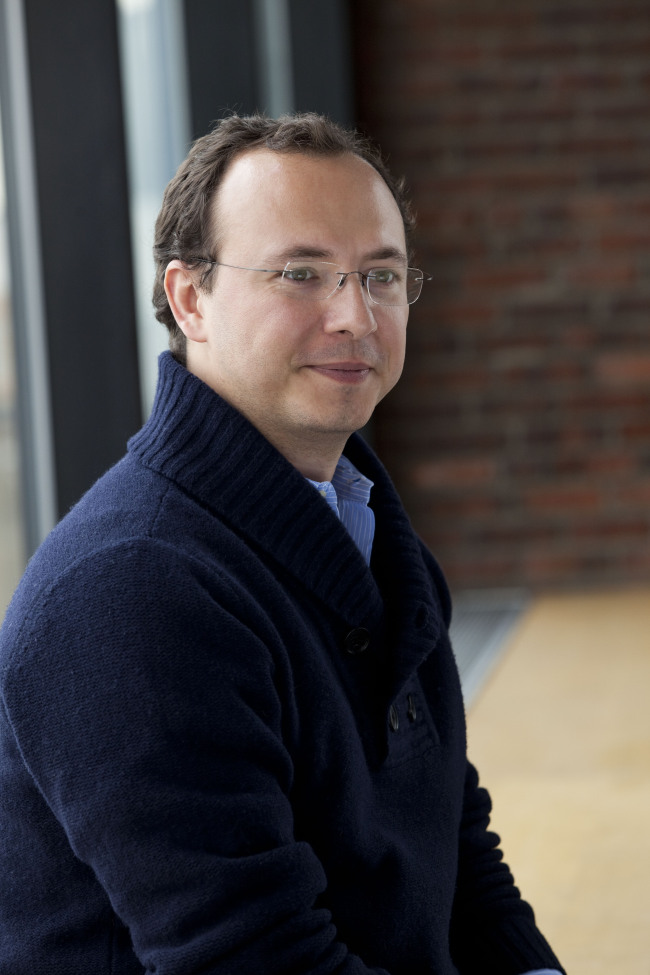
IOT in nascent stage, more to explore: George Popescu
George Popescu is the CEO and co-founder of augmented reality tech platform Lampix. He is also the founder and editor in chief of media company Lending Times.
Over the past 10 years, he has founded over 10 companies in fields such as the internet, craft beer, sports car rental, journal publishing and investment funds.
He holds three master’s degrees: a master’s in science from MIT where he focused on 3-D printing; a master’s in electrical engineering and computer science from Supelec in France; a master’s in nanosciences from Paris XI University.
Q. Who or what do you think has the power to lead the trend of the global design industry?
A. In general I find people who are focused on the future and least conservative lead a given field. For me, design requires a deep understanding of humans, their behavior, their behavioral change, as well as, of course, aesthetics. I think it is the regions of the world that are at the center of the next tech revolutions that will play the big role in this space as well.
Q. The Internet-of-Things is at the center of the fourth industrial revolution. What role do you think design plays in the revolution, or what do you think the role of design should be?
A. IoT is an amazing enabler but the main issue I see with it is usability, user experience, installation. It also opens the door to an incredibly large space full of options. I feel that both these directions have not been explored or little explored. The results so far are insufficient to drive real consumer adoption of IoT. Therefore, we are just at the beginning.
Q. Is there a memorable Korean design?
A. Of course! Who is competing with the American companies and on a world scale from automotives to electronics to household electronics, and more?
Q. What drives you to continue to pursue and try new designs?
A. Solving issues and not being happy with what we have. Also traveling and seeing/learning. Interactions and diversity.
Q. What is a design that gains value over time?
A. Simplicity for me is the most valuable force that will make something gain value over time. Also non-fashionable design that cannot be placed in a particular time, year or age, is also the most valuable over time.
Q. Over the past 10 years you have founded and operated a slew of companies across various sectors. Why do you repeatedly challenge yourself in new industries?
A. I love this question. I love learning new things. Sometimes I do something just because I am curious, because I know nothing about it, and I want to learn. And I love the process through which I learn new things. Especially if it’s challenging. So it’s curiosity and interest in learning. Perhaps also boredom. I get bored fairly easily.
Q. You are currently the CEO of Lampix, which is not yet well-known in Korea. What does Lampix mean?
A. Lampix means Lamp + Pixel. Have you seen the movie “Minority Report” with Tom Cruise? We make a device like in that movie. It’s a device that uses the latest technologies like those used in self-driving cars to make any surface “active and smart.” We think of it as a new category of device different to computers and smartphones. The best way to understand it is to watch the videos on our website www.lampix.com. And we launched a crypto token called Pix to help us do “image mining” to train our computer vision, the key of the entire system.
Q. Many expect augmented-reality technology to greatly impact our lives. What are some pros and cons of AR?
A. Augmented reality brings people together and encourages sharing, communication, collaboration, interaction. I think it will be much bigger then VR (VR is for the kind of stuff you do by yourself in your basement). Cons: For the glass type of AR , like Hololense, Google Glass, etc, it is very hard to create content, and to program them. Very complicated. In our case we made Lampix easy to use, program and to create content for. We think easy is the key.
Q. The title of your speech for this year’s Herald Design Forum is “Mapping out the 7th sense for humanity.” What does it mean?
A. In my case it is about including objects in inputs the computers use. Right now, computers have inputs (=senses) that are keyboards, mice, network card, microphones, cameras. However they are not able to sense objects or use pictures/the cameras they use. We are making computers SEE their environment and act on it.
Q. When viewing or creating designs, what you value the most?
A. Simplicity and intuitiviness
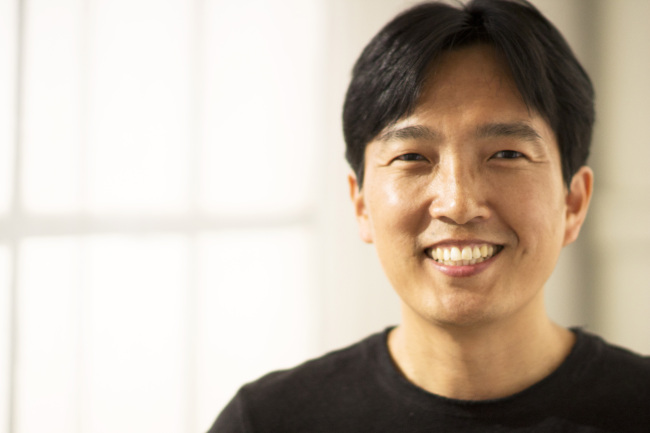
Consumers lead design trends: Sung Jung-gi
Sung Jung-gi is the creative director and product designer of design company Daylight Asia’s headquarters in Seoul.
The industrial designer was the first-ever Korean designer of Ideo, a US-based international design and consulting firm, before taking a post at Lunar between 2006 and 2013.
The concept hair dryer that sounds like the engine of the Porsche 911 model was recognized by the Porsche Grand Prize.
He received the iF Gold award for his design of Elastine shampoo bottles.
Q: Who or what do you think has the power to lead trends in the global design industry?
A: I think the consumers, rather than the manufacturers, have the power to lead design trends today. Consumers themselves and the various networks that connect them become platforms that influence the designs. Consumers use, evaluate and share the designs and expand such experiences. In my opinion, this is an era in which consumers have more design power than the designers, who have traditionally been primary (design) manufacturers.
Q: What role do you think design will play in the fourth industrial revolution?
A: Design should focus more on its original role, which is to create universal value. In recent years, designers have been known to lead the new era by focusing on their own unique values, but I believe design fulfills its true role when it can create universal values.
As we came to enjoy many universal values through the first industrial revolution, designs and designers should play a role in a new revolution occurring on the foundation of moral values. My goal as a designer is also to create such universal moral values.
Q: Any design or designers from other countries that have left an impression on you?
Ideo founder Bill Moggridge and Lunar’s design partner Jeff Salazar. One gave me strength to keep designing in my time of hardship, and the other kept watch on me -- from near and from afar -- and made me realize the role of a design and a designer.
Q: What is your driving force? What drives you to pursue and try out new designs?
A: I always say a designer is a job that requires the thinking and actions of someone aged between a fourth grader and a second year middle school student. To be able to think freely and be relatively free from being held liable for one’s actions, to have the mind of a child and to retain the sensitivity of the age when one just begins to contemplate about life, I think these elements are closely linked to whether a designer is able to continuously be creative. For me, being able to retain such behavior is closely related to whether I can keep designing.
Q: What is design that gains value over time?
A: When a certain phenomenon changes because of a design, that design sticks in my mind. A children’s toothbrush that was designed at Ideo is that kind of design. Before, children’s toothbrushes were a smaller version of ones for adults. But through observation by Ideo, the new design had much thicker handles than adults’, and it changed nearly all the children’s’ toothbrushes from that point on.
I believe a successful design is one that creates new value and has a lasting influence on other designs that follow. I make an effort to ensure that my designs carry such values and change behaviors.
Q: How do you get a grasp of “user experience” and apply it to your design?
A: I make observations about a person, that person’s interaction with a product and the environment from an objective point of view. These observations become an invaluable subject matter in creating a story, which affects the ultimate design.
Q: People associate your name with your shampoo bottle design. How did you come up with it?
A: This design was created with the aforementioned intent to make the value of a design universal. It says it is for people who cannot see but when you think about it, everyone experiences temporary blindness when they wash their hair. So I made it possible for everyone to be able to distinguish between a shampoo, a conditioner and a hair mask by simply touching it. If my design were exclusively for people with visual impairment, I would be creating another wall. This design’s concept is to satisfy everyone, not just certain people.
Q: One of the keywords explaining Sung Jung-gi’s design is “humanity.” What significance does it have in your design?
A: I believe that humanity is essential in all actions of a designer, not just regarding the influence one’s design has. As a designer, I believe people should be at the center of all this.
Q: As a designer, what kind of design do you pursue?
A: The reason I chose Lunar design was because the company allowed me to conduct personal work. I wanted to create designs that can change how the people close to me think and act. Right now, we not only need to manufacture new products, but also create designs that can change how people think and act.
I believe that by designing new products and introducing them to the world, we can also introduce new way of thinking, a new way of acting. Mass-producing new thoughts can be the first step.
Q: Please tell us about your recent work that left an impression.
A: I recently started working at Daylight and had a chance to design baby carriages with people I used to work with at Ideo. This convinced me once again that collaboration in designing is the best way to creating value. I personally believe that designing should be fun in each step of the way. I also believe that a design completed through a relationship based on such fun is more likely to succeed than ones that were not. My past experience taught me that, and this project reassured me.
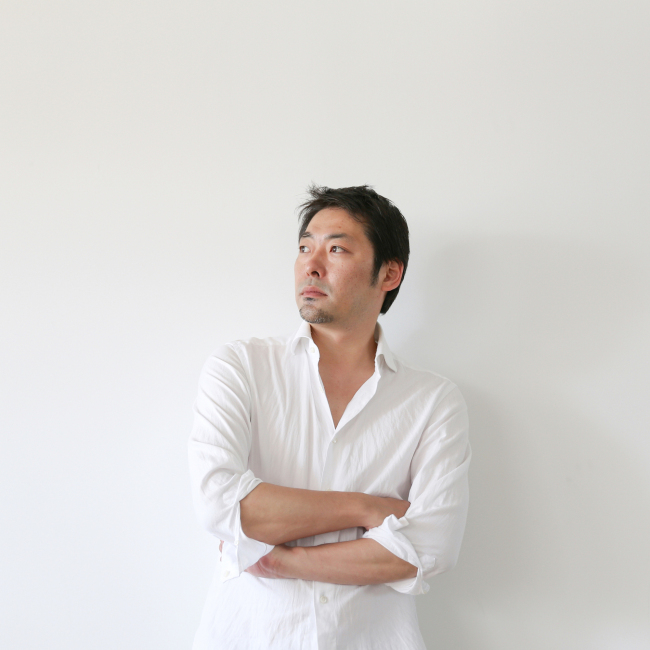
Exciting user experience is guiding principle: Gen Terao
Product designer Gen Terao is the CEO of Balmuda Inc., which he founded in 2003.
Prior to entering the design industry, the award-winning designer pursued a career in music as part of a band until 2001.
After the band disbanded, Terao taught himself skills in product design and manufacturing.
Balmuda Inc. was first brought to public attention following the launch of Green Fan in 2010.
The Balmuda The Toaster toaster-oven, which marks the first product of the company’s Hello Kitchen! Series, won the gold prize at the Good Design Awards in 2015.
Q. The Internet-of-Things is at the center of the fourth industrial revolution. At this point, what role do you think design plays in the revolution, or what do you think the role of design should be?
A. Bridging the gap between our basic pursuit of happiness and ever-changing technology.
Q. Is there a memorable Korean design?
A. A tool is the most beautiful when it is used and it is in this moment that the tool brings joy to the user. For instance, when I hold an antique Korean teacup in my hand, the beautiful form gives me a deeper appreciation of the taste of the tea. In this sense, I think the stone bibimbap bowl is a superb tool.
Q. What is your driving force?
A. I have a strong desire to make people happy whether it is through music or products. Balmuda’s aim is to provide exciting experiences for a joyful life. Experiences are conceived as a combination of input through our five senses and in many experiences, sight is the first source of input. Therefore, to deliver a wonderful experience, design is an important factor in our products.
Q. What is a design that gains value over time? Among your work, which is the most ideal for you and why?
A. Fresh new designs become old from the minute they are created but products that have been well thought through remain beautiful throughout time. To create something beautiful, one needs to contemplate the true meaning and value of the product.
Among my creations, Balmuda The Toaster is my most ideal in the sense that we created an appropriate design for a tool that serves delicious toast.
Q. Your experience as a member of a rock band and working at a factory stands out. Did they influence product development and design at Balmuda Inc.?
A. Whether it is a tool or a service, everything traded in the market is a combination of art and technology. Music combines these two aspects at a high dimension by using technology, such as the musical scale and instruments, and outputting in an artistic form. Creating a suitable beat or groove is also important, as well as the determination to excite and make people happy. Music taught me these important principles and we value them in Balmuda as well.
Q. Why did you start focusing on small household appliances? Is there a large appliance you would like to innovate in terms of design?
A. I simply started with a genre that seemed within my reach. I might design something bigger someday, possibly vehicles.
Q. Simplicity is not only seen in products made by Balmuda Inc. also its packaging. Balmuda Inc. has made name for itself as the “Apple of small household appliances.” What are your thoughts on this?
A. We try to keep our creations simple, whether it is the product, packaging, catalogue or instruction manual. As technology advances, the mechanism of products is becoming more complex and at the same time the artistry that attracts people is becoming more diverse. This may be why simplifying the appearances of products is becoming the mainstream. Apple was one of the first companies to elevate technology and art to a very high dimension which is something that Balmuda is also trying to realize in our products.
Q. It is not easy to capture both simplicity in design and functionality. How was Balmuda Inc. able to achieve both?
A. At Balmuda we keep our ideas simple. We contemplate peoples’ desires and come up with one simple value that we want to offer. Our designs and functions turn out to be simple because what we want to realize through the product is simple and straightforward.
Q. Small household appliances made by Balmuda Inc. are in high demand despite their higher-than-average price tags. Many customers point to the design as the reason for their high popularity. Why do you think Balmuda Inc. products are in demand?
A. I don’t think people purchase our products only for their design. For example, the value that GreenFan delivers is “comfort.” The soft natural breeze, the quiet operation along with its beautiful design are all aspects that contribute to delivering comfort. We are not creating home appliances, but tools that deliver wonderful experiences and this is why we have been successful so far.
Q. Could you give an example of a product made by Balmuda Inc. that has achieved innovation via design?
A. If in this question the term “design” refers only to the configuration of a product, I would say none of our products have achieved innovation.
Q. Balmuda Inc. has gradually expanded its product portfolio. It now includes office equipment, home appliances and kitchen appliances. What is next?
A. I can’t not give away details but in the upcoming year we hope to introduce a new line of products to follow our air series and kitchen series.
caps:
George Popescu Herald Design Forum
Sung Jung-gi Herald Design Forum
Gen Terao Herald Design Forum










![[Kim Seong-kon] Democracy and the future of South Korea](http://res.heraldm.com/phpwas/restmb_idxmake.php?idx=644&simg=/content/image/2024/04/16/20240416050802_0.jpg&u=)



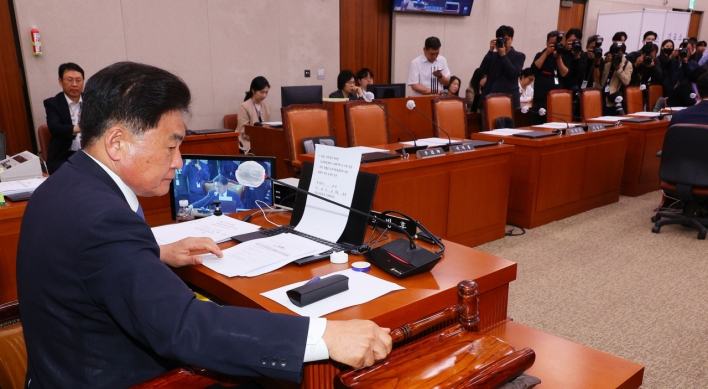

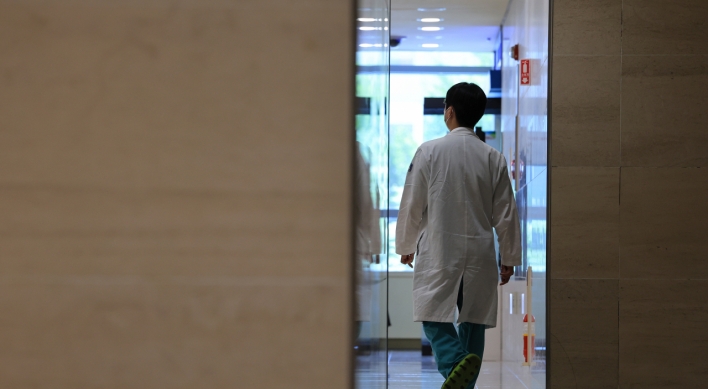


![[Today’s K-pop] Zico drops snippet of collaboration with Jennie](http://res.heraldm.com/phpwas/restmb_idxmake.php?idx=642&simg=/content/image/2024/04/18/20240418050702_0.jpg&u=)